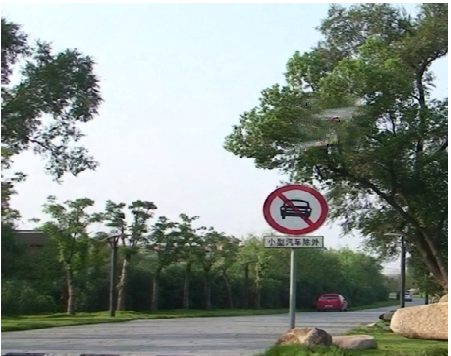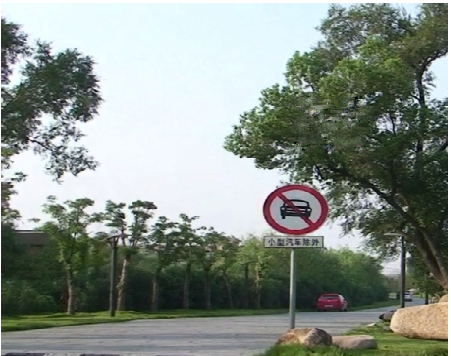Section: New Results
Rendering, inpainting and super-resolution
image-based rendering, inpainting, view synthesis, super-resolution
Color and light transfer
Participants : Hristina Hristova, Olivier Le Meur.
Color transfer aims at modifying the look of an original image considering the illumination and the color palette of a reference image. It can be employed for image and video enhancement by simulating the appearance of a given image or a video sequence. It can also be applied to hallucinations of particular parts of the day. Current state-of-the-art methods focus mainly on the global transfer of the light and color distributions. Unfortunately, the use of a global distribution is questionable since the light and color of image can significantly vary within the same scene. In [27] , we proposed a new method to deal with the limitations of existing methods. The proposed method aims at performing the partitions of the input and reference images into Gaussian distributed clusters by considering the main style of input and reference images. From this clustering, several novel policies are defined for mapping the clusters of the input and reference images. To complete the style transfer, for each pair of corresponding clusters, we apply a parametric color transfer method (i.e. Monge-Kantorovitch transformation) and a local chromatic adaptation transform. Results, subjective user evaluation as well as objective evaluation show that the proposed method obtains visually pleasing and artifact-free images, respecting the reference style. Some results are illustrated in Figure 3 .
In [34] , we extended the method presented in [27] to deal with a color transfer between two HDR images. One limitation of the two proposed methods is that we are still considering that the distributions of color and light follow a Gaussian law. We are currently investigating a more general approach by considering multivariate generalized Gaussian distribution.
Image guided inpainting
Participants : Christine Guillemot, Thomas Maugey.
Inpainting of images has been intensively studied in the past few years, especially for applications such as image restoration and editing [16] . Another application where inpainting techniques are useful is view synthesis, where holes are to be filled corresponding to areas that are no longer occluded. In the particular cases where one has access to ground truth images (like for example in multiview video coding where view synthesis is used for predicting the captured views from a reference one), auxiliary information can be generated to help inpainting, which leads to the concept of guided inpainting.
In [29] , we have proposed a new auxiliary information that is used to refine the set of candidate patches for the hole filling step of the inpainting. Assuming that the patches of an image lie in a union of subspaces, i.e., the images have different regions with different color textures, these patches are first clustered using a new recursive spectral clustering algorithm that extends existing sparse subspace clustering and replaces the sparse approximation by locally linear embedding, better suited for the inpainting context. Dictionaries are then built from these clusters and used for the hole filling process. However, the inpainting is not always able to "guess" in which cluster the patches of the hole belong to (especially around discontinuities). The auxiliary information that is built from the ground truth image may help to find the right cluster. We thus propose a new guided inpainting algorithm that forces the patch reconstruction to be done in one cluster only, if no auxiliary information is available, or in the cluster pointed by the auxiliary information, if it is available. Experiments (Fig. 4 ) show that auxiliary information helps to significantly improve the inpainting quality for a reasonable coding cost.
|
We are currently working on the extension of this technique in order to place the guided inpainting problem in an information theoretic framework, and better answer the following questions: when additional information is actually needed? What type of auxiliary information is needed? how to optimize in a rate-distortion sense the guided inpainting problem?.
Clustering on manifolds for image restoration
Participants : Julio Cesar Ferreira, Christine Guillemot, Elif Vural.
Local learning of sparse image models has proven to be very effective to solve a variety of inverse problems in many computer vision applications. To learn such models, the data samples are often clustered using the K-means algorithm with the Euclidean distance as a dissimilarity metric. However, the Euclidean distance may not always be a good dissimilarity measure for comparing data samples lying on a manifold. We have developed two algorithms for determining a local subset of training samples from which a good local model can be computed for reconstructing a given input test sample, where we take into account the underlying geometry of the data. The first algorithm, called Adaptive Geometry-driven Nearest Neighbor search (AGNN), is an adaptive scheme which can be seen as an out-of-sample extension of the replicator graph clustering method for local model learning. The second method, called Geometry-driven Overlapping Clusters (GOC), is a less complex nonadaptive alternative for training subset selection. The AGNN and GOC methods have been evaluated in image super-resolution, deblurring and denoising applications and shown to outperform spectral clustering, soft clustering, and geodesic distance based subset selection in most settings.






